cognitive: week 7: Skills, habits and expertise
1/37
There's no tags or description
Looks like no tags are added yet.
Name | Mastery | Learn | Test | Matching | Spaced |
|---|
No study sessions yet.
38 Terms
Yerkes-Dodson Law
A principle that describes the relationship between arousal and performance, suggesting moderate arousal leads to optimal performance.
Deliberate Practice
A method of practice that is effortful, extensive, component-focused, and aimed at reducing errors to improve skill.
Stimulus Onset Asynchrony (SOA)
A manipulation in cognitive tasks that involves presenting words and colors at different times to study processing speed.
Training and Automaticity
The concept that with enough practice, tasks can become automatic, illustrating a continuum of automaticity.
Automaticity:
Refers to rather specific properties of performance.
Tasks that can be performed quickly, effortlessly, and relatively autonomously are thought to be automatic , tasks that cannot be are thought not to be automatic
Automaticity refers to more specific properties of performance than skill (which is a more general ability to complete a task), but it is closely related to skill in that it is an important component of skill.
The type of tasks used to measure automatic processing
conflict tasks:
stroop tasks
name the colour of the ink of the word and override the actual reading the work
Flanker test
respond to the central arrow
Simon test
push the named button
go/no-go task
tests capacity not to respond
press on go trials
do nothing on No-Go trials
stop the automatic response of pressing
Norman doors: real life conflict task

even though the door says push, our automatic response typically when seeing handles on a door is to pull
More conflict
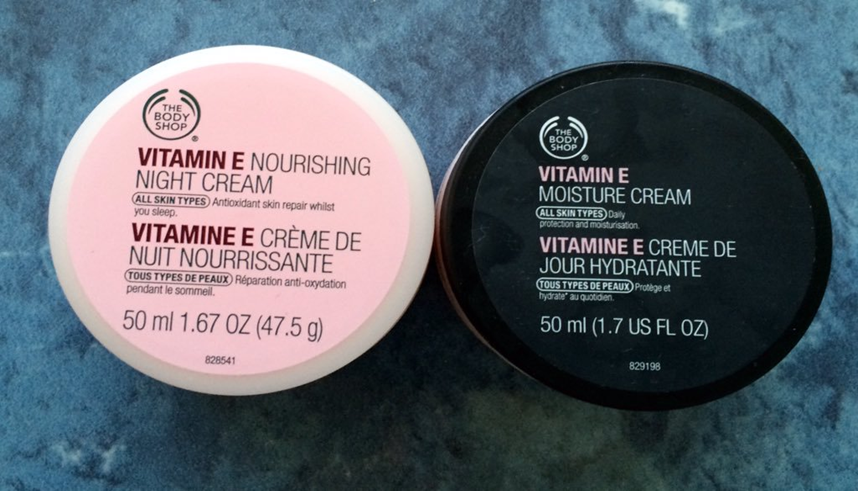
typically the darker packaging on a product for skin would suggest it is a night cream, that is our automatic assumption, however, in this scenario the body cream that’s to be used in the day is black and the night cream is pink
The stroop task
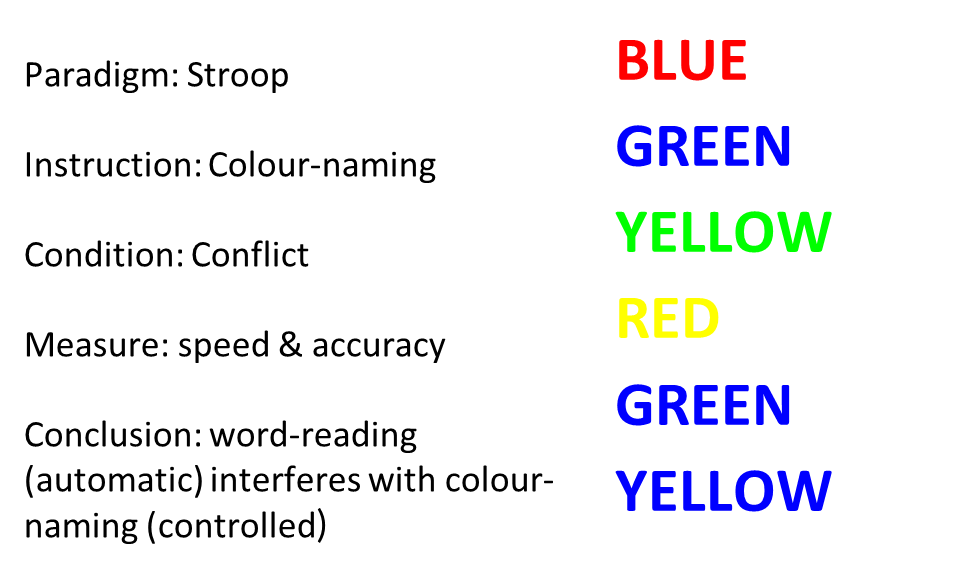
a list of words in different colours, when it doesn’t match the actual word this is incongruent, which changes our speed of accurately completing the task
The interference is the difference between the RTs to congruent and incongruent conditions.
Slower RTs to incongruent information than congruent information when naming the ink colour (but not when reading the word) suggests that automaticity of word reading interferes with the processing of the ink colour.
Associations between stimulus and response formats
stimulus-response and translation account
In the traditional Stroop task there is typically a verbal based response to the stimuli
oral response or respond manually to visual written word
This is regardless of whether the task is to name the colour of the ink (visual sensory task/stimuli ) or to read the word (visual verbal task)
Durgin (2000) argues that the match between the verbal stimuli of the written word and the verbal-based response when asked to read the word requires less processing than when asked to name the ink colour (mismatched S_R)
When naming the ink colour the target information of ink colour must be translated into the appropriate verbal classification modality, whereas the non target (distractor) information of the actual word is already in the verbal modality
Translation account of the Stroop Interference (Virzi &Egeth, 1985)
Represents a perceptual motor task rather than a categorical task requiring translation from verbal information into categorical or visual information. Findings support the response –compatibility / response-competition model of Stroop Interference.
Looking at the S-R a bit more closely
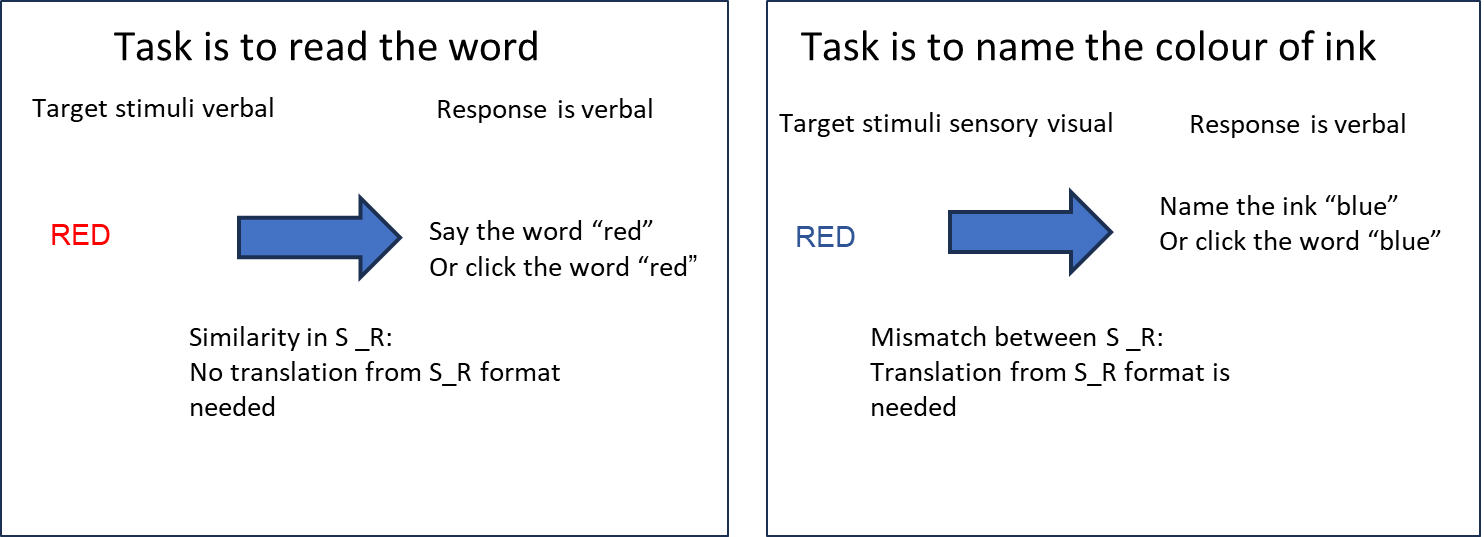
access sensory stimuli then translate that back into a verbal response
Response manipulations
Durgin (2000): Changed the format of the response- participants needed to respond to Stroop stimuli by using a computer mouse to point to coloured patches
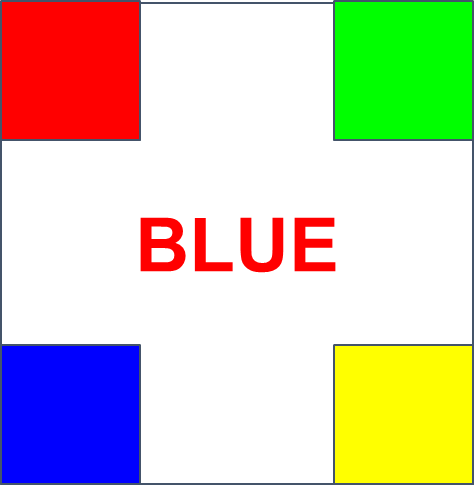
The tasks were:
To point to the ink patch that matched the meaning of the word (word reading)
To point to the ink patch that matched the colour of the ink the word was written in
There were only neutral (for the word task the colour word was in grey ink and for the ink naming task furniture words were presented in coloured ink) and incongruent conditions (no congruent conditions)
Represents a perceptual motor task rather than a categorical task requiring translation from verbal information into categorical or visual information. Findings support the response –compatibility / response-competition model of Stroop Interference
So now the S-R correspondence looks like this

Durgin (2000) results:
When they needed to point to the colour patch consistent with the word meaning, colour interfered with word-naming/reading.
This interference did not happen when they needed to point to the colour patch that matched the ink , - a “reverse Stroop effect”
Durgin (2000) conclusion
Durgin argued that the findings were against automaticity theory as pointing to the ink is not automatic. But rather automaticity is based on the word reading being the fundamental aspect of automatic process
However, it could be that stimulus response compatibility is actually key to automaticity - it is not just a sensory process, but about the associations between stimulus and response
When the S_R formats are similar then this supports automaticity
Attentional manipulation
In the traditional Stroop task the argument that automaticity of word reading can explain the stroop effect (interference) has been based on participants paying attention to whole words
These words are thought to activate semantic and lexical processing
So attention is paid across the whole word
What happens when participants are asked to pay attention to a specific letter in the word?
Well Besner conducted two studies to find out:
Study 1
They directed attention to a single letter in the word as that letter was the only part of the word in a coloured ink.
Results: Stroop effect eliminated when only one letter was coloured. Suggesting that paying attention to part of the word did not lead to automatic processing of the word at a semantic level

Study 2:
Attention was directed to a single letter in the word by having an arrow point to the target letter
results: the stroop effect was reduced or eliminated by cueing one letter of a coloured word
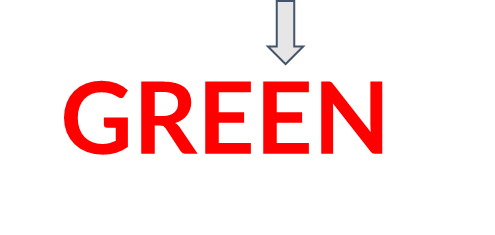
Conclusion
Automaticity of word reading is not independent of all other cognitive processes as where you pay attention and how you pay attention seems to affect whether word reading appears to be automatic
Stimulus Onset Asynchrony (SOA) and speed of processing
An alternative to automaticity as an explanation for the Stroop effect is the speed of processing account
It is simply that words are processed more quickly than ink colour
In the traditional Stroop task the word is presented at the same time as the ink: indeed the word is written in the colour of the ink.
What happens if the presentation of the word and the ink colour is staggered (asynchrony)?
Stimulus onset asynchrony manipulations:
Glaser and Glaser (1982): Presented the colour and word components of Stroop stimuli at different times; a stimulus onset asynchrony (SOA) manipulation
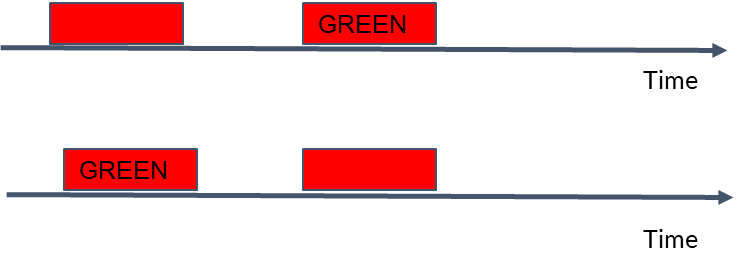
At 300 and 400 ms the irrelevant stimulus (word) is presented too late to interfere with processing of ink naming
SOA: Result

For naming the ink (colour naming) you see the Stroop effect regardless of when the word stimuli was presented until word is presented at 300 and 400 ms after the ink*
*Note: At 300 and 400 ms the irrelevant stimulus (word) is presented too late to interfere with processing of ink naming
no amount of head start for colour information produced interference on word reading
In the colour naming task, there was a stroop effect all the way through until where the name is being said way before the colour (just below ‘colour naming’ on the graph), so there is no real time for the word to have an effect on the word colour effect
Conclusions:
Speed of word processing being faster than ink processing cannot explain these findings- there is more to automaticity than just speed of processing
Automaticity- is it all or nothing?
there is a debate as to whether a process is either automatic or not (all or nothing) or whether automaticity can gradually develop (dimensional)
can anything become automatic?
The stroop effect is often explained by the fact that word reading is automatic so interferes with naming the ink
but with practice can anything become automatic?
this was investigated by MacLeod and Dunbar (1988)
MacLeod and Dunbar (1988):
Training on the stroop task:
trained participants to name novel shapes with colour words, there were 4 phases:
first was baseline naming of the four familiar colours
second was training in naming the four novel shaped by using the names of the same four colours
third was naming the colours when they appeared as shapes
fourth was to name the shapes when they appeared in colour
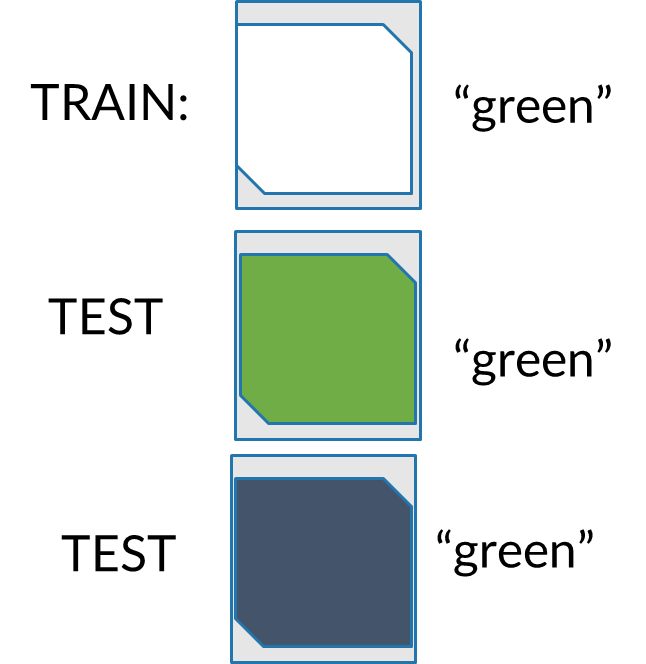
There were three experiments: each experiment differed in the amount of training given: 2,5, or 20 hours
Results:
Initially (2 hours): colours interfere with naming shapes (naming the colour is the more dominant, automatic process)
Intermediately (5 hours): colours interfere with naming shapes and vice versa
After extensive training (20 hours): shapes interfere with naming colours (naming the shape is now the more dominant, automatic process)
Conclusion
A process is not either (completely) automatic or controlled but you can make something automatic with practice
Suggesting that automaticity is dimensional - “continuum of automaticity”
Suggesting that perhaps most things may have the potential to become automatic with enough practice
Logan (1985, p. 371) says “there is clear evidence that practice is important in producing automaticity, which suggests that automaticity may be learned…. The idea that automaticity is learned and that attributions of automaticity are relative judgments suggests that automaticity should be viewed as a continuum.”
Du et al. (2022)
Du et al. (2022) suggest that habits should not be thought of as applying to a singular behaviour rather that habits are formed at intermediate computations and therefore can be equivalent to that of automaticity in skill. This leads to increased speed at the expense of flexibility.
The route i.e., driving home from work is the habit- driving is a skill.
Whilst habits are often explained as a behaviour resulting from S-R associations , a stimulus can also prompt a skilled behaviour which is a swift (fast) response to selecting the correct response- therefore the response may not necessarily be exactly the same but will be selected based on such things as environmental factors
However, habits do not mean that there is skill as unskilled behaviour can become habits.
Habits are:
Over learnt stimulus-response pairs
triggered by the environment
rapid
stereotyped
inflexible
ballistic
Comparing skills and habits

Skill is flexible and goal driven:
The hallmark of skill is the rich interplay between automatic and cognitive control processes and this is in contrast to habit
Psychologists, commonly characterize habitual actions as automatic, inflexible, and stimulus-driven; by contrast, they insist that although there are elements of automaticity in skill, skilled actions remain goal-directed and highly flexible.
The theory of hierarchical control
It is based on typing
Typing as a skill: controlled and automatic processing
Typing is a learnt process and skilled typists need to be accurate and fast -involves both automatic and controlled processing
Words need to be interpreted from the information presented and then matched to the output – can be measured via detection of error through mismatch between intended output and actual output
Skilled copy typing depends on translation of words into motor commands for keystrokes, and relatively automatic timing and execution of keystrokes (Logan, 1985)- errors may be observed through kinesthetic feedback from keystrokes.
Logan & Crump (2010)- Condition correct
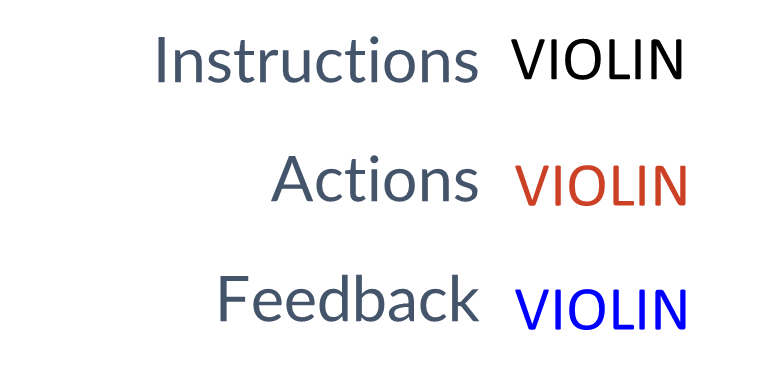
Participants copy-typed individual words and received feedback on their action…
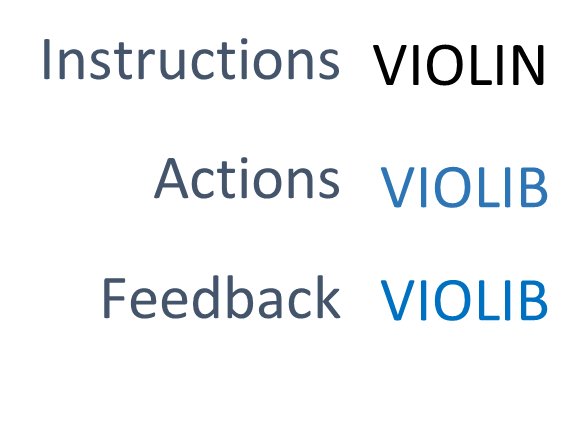
if typed wrong then they would get feedback saying so

sometimes the feedback informs them that they have made an error when they had actually typed it correctly

whereas sometimes they make errors, which are “corrected” by researchers
Assessing performance
Researchers took two measures:
1. Self-report (subjective perception of performance)
Are they aware of their actual performance or are they influenced by feedback - false reports of errors or corrected errors ?
2. Inter-key interval (typing speed as a measure of motor response)
Hitting the keys (typing) is automatic so motor response is unlikely to be conscious- is the speed of typing influenced by errors?
Results:
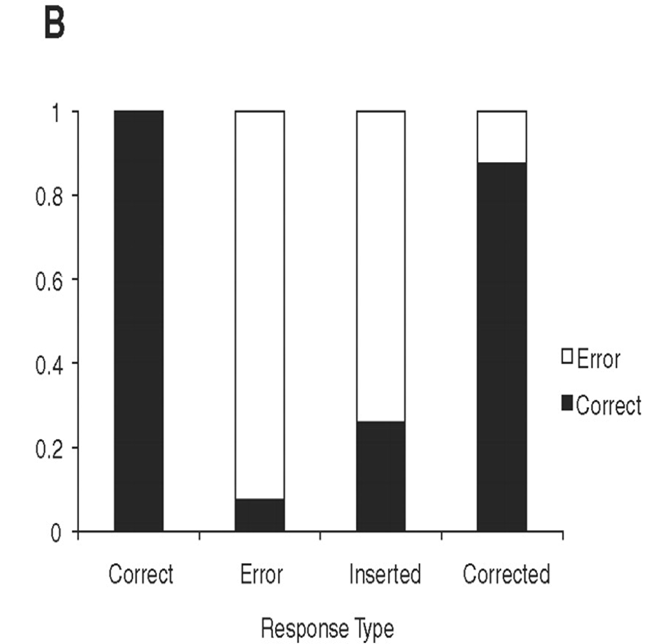
in the correct condition:
typists were correctly able to state that they had made a correct entry (feedback also stated the entry was correct)
In the error condition:
most typists were aware that they had made an error (the feedback also stated error)
In the inserted error condition:
Most typists didn’t notice the error was inserted – they believed that they had typed incorrectly when the feedback falsely stated that they had made an error
An “illusion of authorship”: participants believed they had made errors they hadn’t
in the corrected error condition:
Most typists didn’t notice the error correction spontaneously
An “illusion of authorship”: participants believed they had not made errors when in fact they had
Logan & Crump (2010): RESULTS- inter key interval
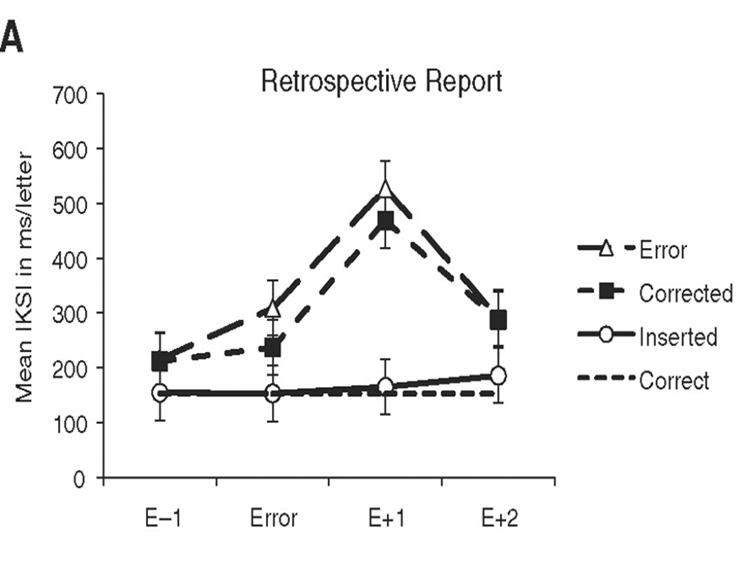
Participants slowed when they made a real error (even if they weren’t told about it), and didn’t slow when they were told (incorrectly) that they had erred
Logan & Crump (2010): meaning
Logan & Crump posit typing skills are controlled by hierarchical loops
outer loop: language comprehension & generation- decides on the words to type
inner loop: translates words into finger movements
Each loop is sensitive to different forms of feedback
outer loop: visual feedback from screen
inner loop: finger/ keyboard interactions
Hierarchical control
frees attention to regulate the hard parts
complex behaviours are neither entirely automatic or controlled
Barriers to the performance of skill:
explanations:
arousal
choking
levels of attention
The Yerkes-Dodson Law
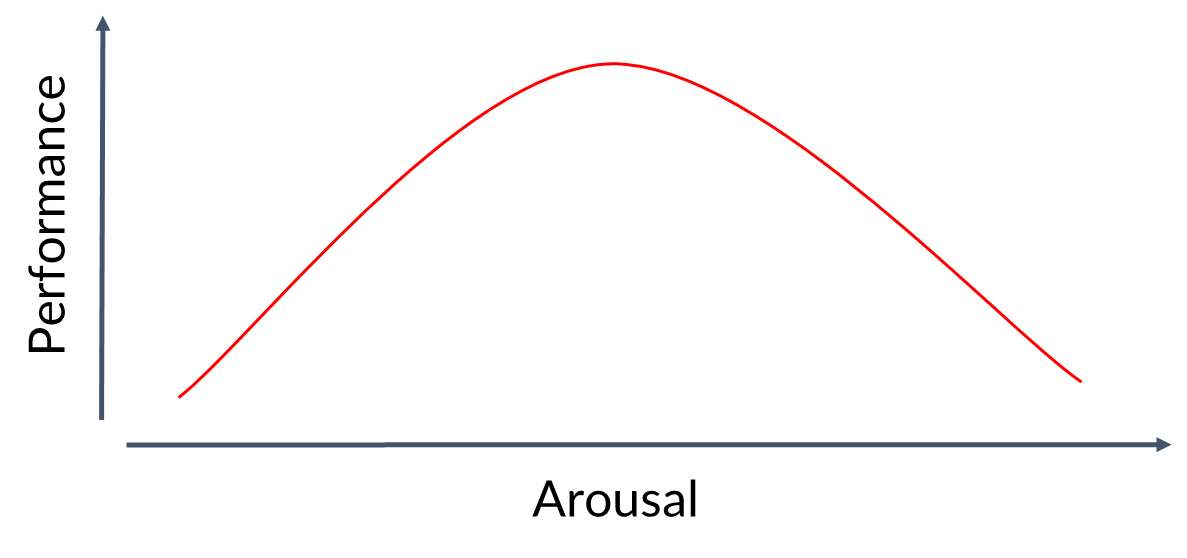
increasing performance at the peak, you need a bit of arousal to have the cognitive energy to do well, but too much can have a diminishing effect on your performance
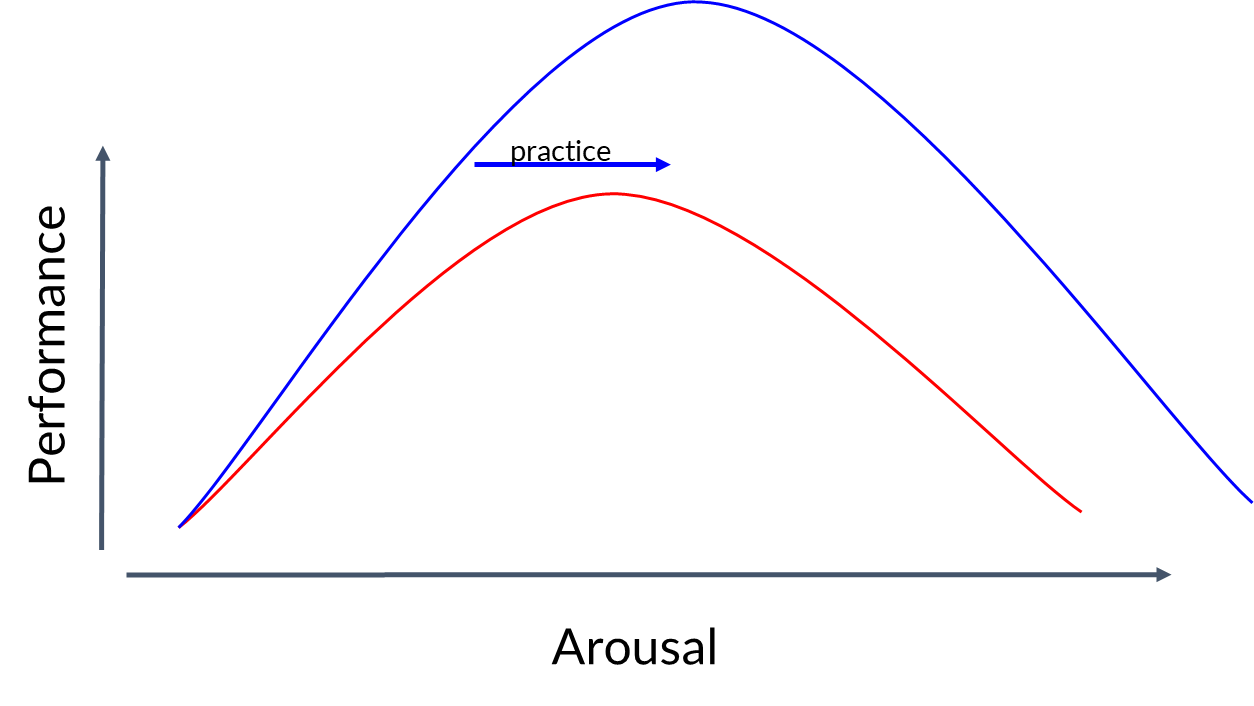
with expertise and practice, you can deal with more arousal before you have this diminishing effect on performance
Choking and football dribbling experiment by Beilloc
Choking under pressure- pressure to perform at high level prompts attention to step by step elements of a well learned skill- leads to errors and slowing
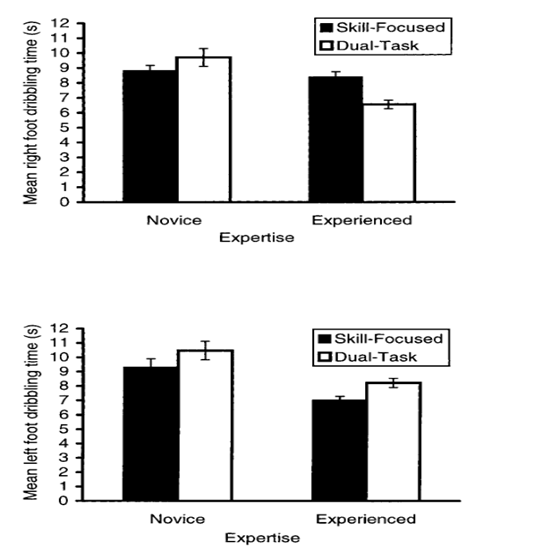
Football dribbling (Beilock et al., 2002b)
Experts: best under dual-task conditions, but only right footed (their dominant foot)- In right foot condition: attentional focus on dribbling hinders performance, distraction improves performance.
Novices: always best under ‘skill focussed’ conditions- distraction hinders performance
Hierarchical control:
where you focus attention is important:
misallocation of attention can disrupt performance
typists told not to type letters typed by one hand-meant focus was on inner loop- performance declines
This could also explain the findings of Beilock et al.
Ironic processing
one way of accounting for disruption in processing is Ironic Processing
thinking hard interferes with the process of doing it, which hinders performance
when mental capacity is reduced (stress, cognitive load, distraction) can lead to opposite to intended goal
the harder you try the more errors you make
Ericsson’s theory of deliberate practice:
Improvement slows but does not stop
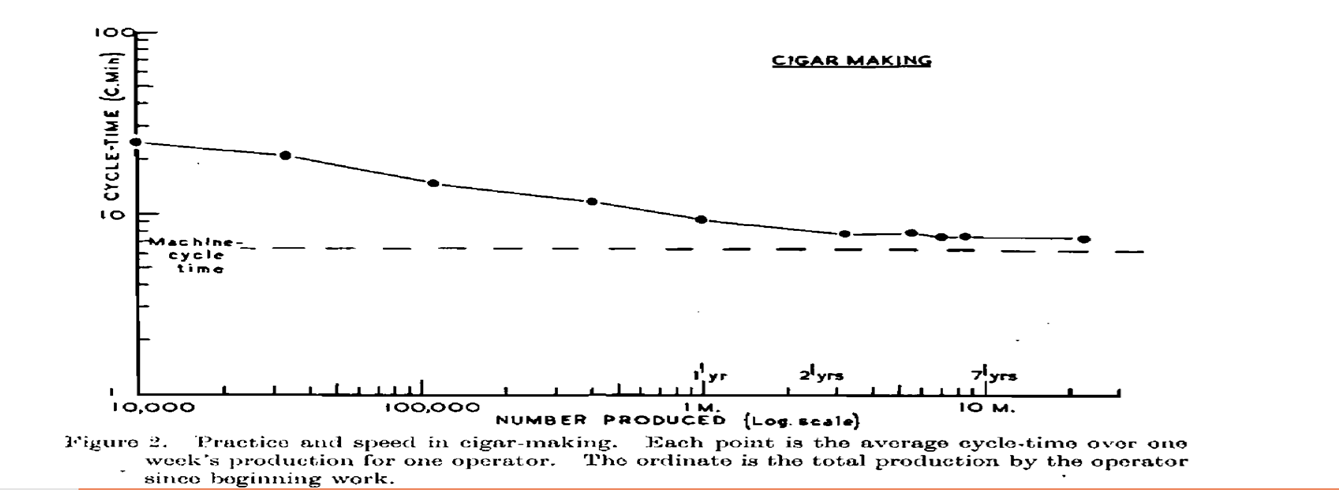
The “ten thousand hours rule”
this is for true expertise
however there are some very young expert chess players, so is it ACTUALLY ten thousand hours
perhaps that is just an outlier
Ericsson never claimed practice alone was enough
he did concede that innate height and environmental factors like support was important
but he has claimed DELIBERATE practice is the main influence on the development of expertise
Deliberate practice:
Effortful, extensive practice
Breaks skill into components
Focus on reducing errors
Use of targets (which evolve as skill increases)
Individually tailored training (i.e. coaching)
Elite violinist
Key findings:
4-5 hours practice a day with naps
they got feedback from their coach
and the trained on the difficult stuff
Errors in figure skating
Skaters who went on to win gold made more training errors than those who went on to win silver or bronze
Because they practiced beyond their current limit
Evidence to challenge Ericsson
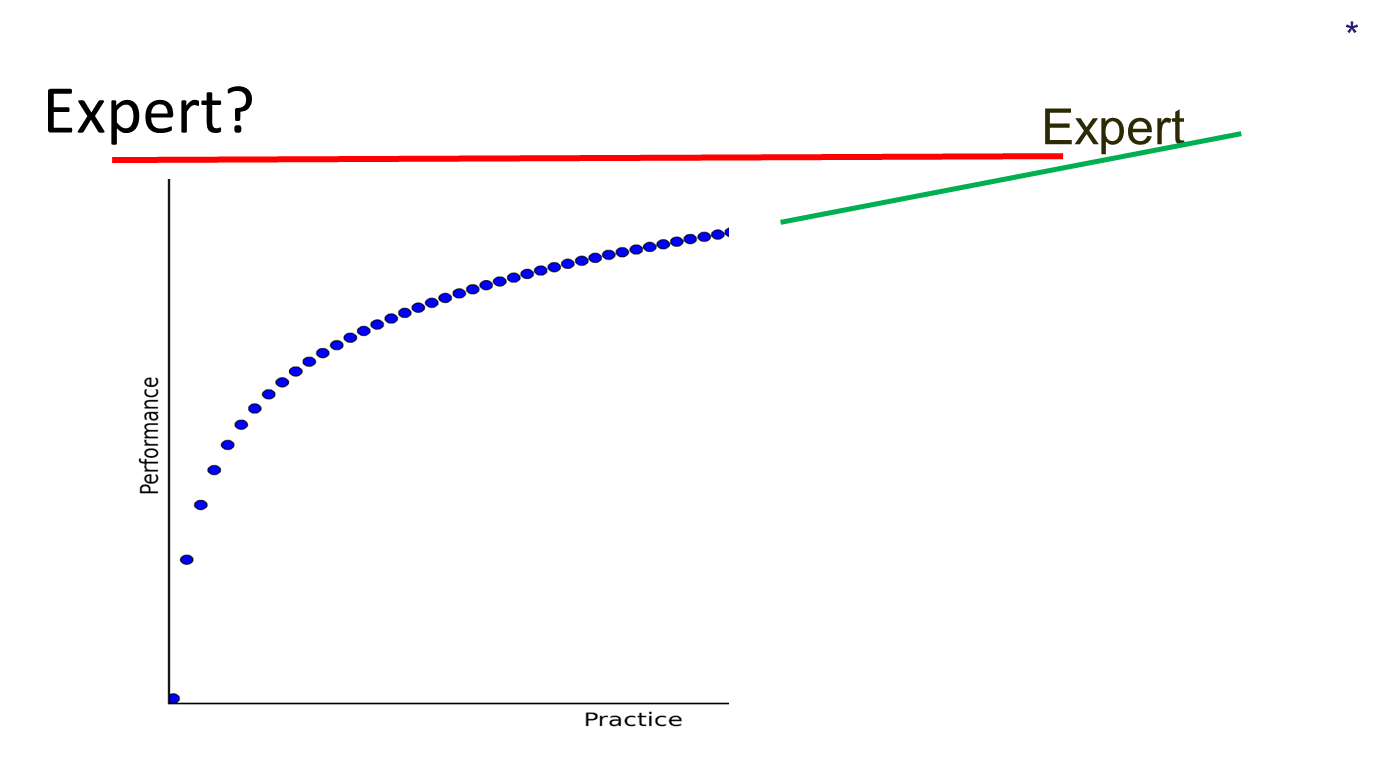
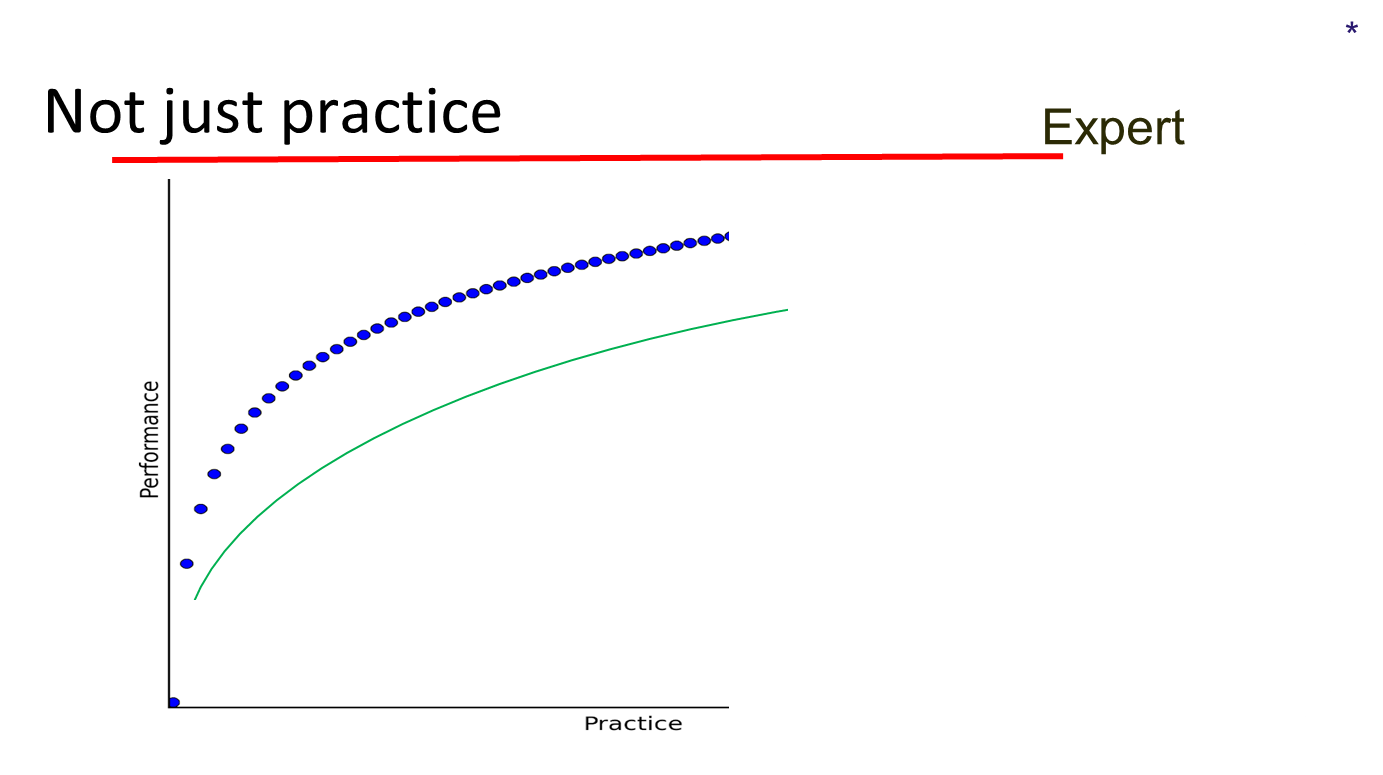
Could be that experts are initially better so follow a different curve
Higher performers have a head start
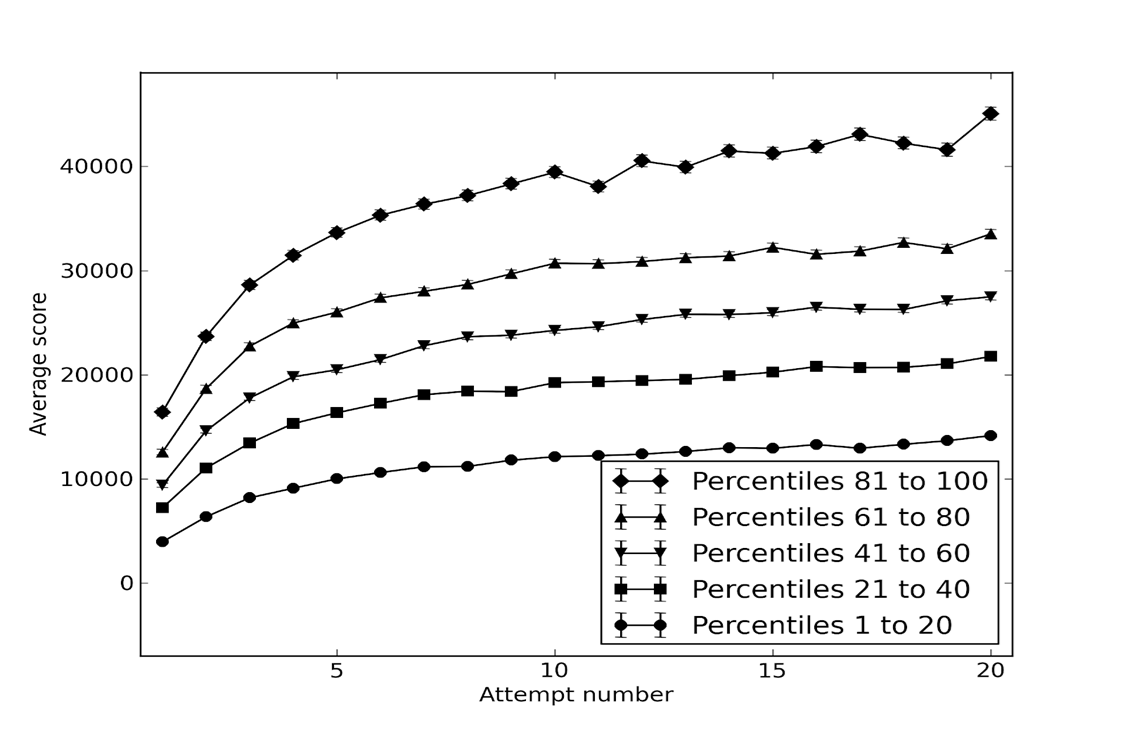
Those in higher percentile started off with higher scores and quick improvement- so not just practice
Macnamara & Maitra (2019)
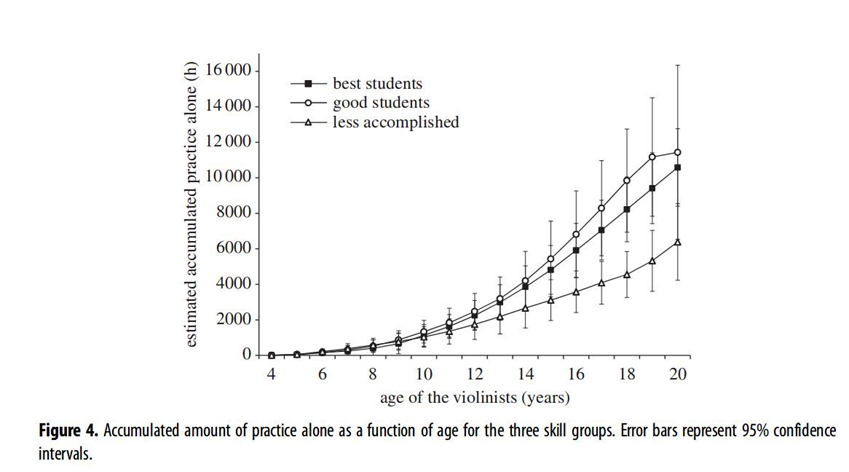
Practice alone does not make an expert
Replication of Ericsson’s violinist study but was was double blind assessment not observational
Practice alone more important than coaching